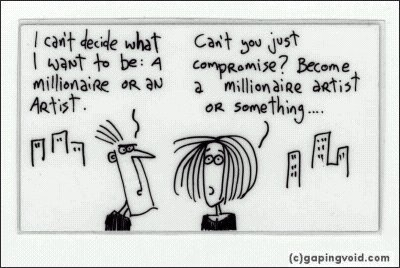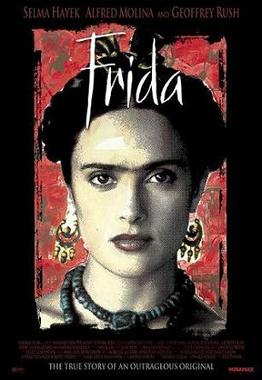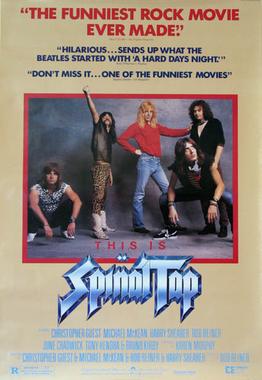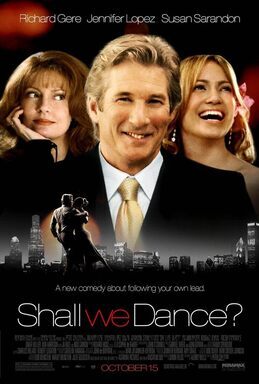So why do we find it so hard to break out of our rutines and do truly innovative things?
Tough question, but I came closer to the answer when I just stumbled upon these 8 interesting rules of innovation based on Tyler Durden from the novel/movie Fight Club by Chuck Palahniuk. For those of you living on a remote island, Fight Club is basically about living the life you truly want to live, and the hard path to getting there. Tyler helps the story’s protagonist in his search for enlightenment in the age of western consumerism.
The idea behind these 8 rules is that we can all learn something from the teachings of Tyler. The idea is that Tyler Durden says a lot of things that apply directly to innovative and creative action. Here are his 8 rules for creative people to live by… and please feel free to talk about them as much as you want to!
Tyler’s First Rule of Innovation:
“No fear. No distractions. The ability to let that which does not matter truly slide.”
This is the most important lesson, and it’s the one people struggle with and resist. Tim Ferriss advocates the 80/20 rule of productivity, where you focus relentlessly on the 20% of the actions that lead to 80% of the return. People see this as nice in theory, but not practical.
The 80/20 rule of productivity requires radical elimination, or letting that which does not matter to creative moves truly slide. Use that newfound time for creative thinking that leads to innovative action, and you will succeed, guaranteed.
Tyler’s Second Rule of Innovation:
“No fear! No distractions! The ability to let that which does not matter truly slide!”
Seriously. Don’t break the first two rules.
Tyler’s Third Rule of Innovation:
“I say never be complete, I say stop being perfect, I say let’s evolve, let the chips fall where they may.”
Let’s face it, when we break Tyler’s first two rules of innovation and distract ourselves with foolish productivity, it’s often because we’re afraid (which also violates Tyler’s first two rules). We’re afraid of failure, ridicule, risk, mediocrity, and perhaps even success itself.
If you’re going to evolve and grow as a creative person, you’re going to make mistakes. In fact, you should start making twice as many mistakes as soon as possible if you want to have an innovative breakthrough.
Make mistakes and let the chips fall where they may. You might like the landing.
Tyler’s Fourth Rule of Innovation:
“It’s only after we’ve lost everything that we’re free to do anything.”
Oh, yeah… don’t be afraid to make big mistakes. More importantly, don’t worry about everything going according to plan. In fact, if everything’s going according to plan, there’s a good chance nothing remarkable is getting done.
They say life is what happens while you’re making other plans. Innovation is what happens when you recognize when to change the plan and perhaps the entire game. Maybe your initial plan falls apart, or maybe you simply need to throw the current plan away.
Don’t let the plan restrict the freedom to have a game-changing idea, and act on it, at any time. Losing everything may be the best thing that ever happens to you.
Tyler’s Fifth Rule of Innovation:
“You’re not your job. You’re not how much money you have in the bank. You’re not the car you drive. You’re not the contents of your wallet. You’re not your... khakis.”
When we talk about fear, risk, mistakes, and losing it all, what are we really afraid of? Are we defined by the stuff we own, or would we prefer to be defined by what we accomplish and create for the world?
I’m not saying give all your stuff away or take foolish risks that harm your family or yourself. I’m saying don’t let the stuff you own start to own you to the point that you can’t live the life you want to live and do the things you want to do.
Tyler’s Sixth Rule of Innovation:
“People do it everyday, they talk to themselves… they see themselves as they’d like to be, they don’t have the courage you have, to just run with it.”
I bet you’ve got a great idea right now, bouncing around in your head. What are you going to do with it?
Be what you’d like to be, and do what you’d like to do… it really is that simple.
Having the courage to just run with it is the difference between a fulfilling life and a life full of regret.
Tyler’s Seventh Rule of Innovation:
“Sticking feathers up your butt does not make you a chicken.”
On the other hand, wearing black hipster clothing and hanging in cafes smoking Gaulloises cigarettes does not make you creative. Buying a MacBook Pro and an iPhone doesn’t get it done either.
Creativity and innovation are mainly about hard work. It’s about constantly coming up with ideas and thinking through problems instead of vegging out. And it’s about taking action, plain and simple.
Tyler’s Eighth Rule of Innovation:
“This is your life, and it’s ending one minute at a time.”
First, you have to know, not fear, know that someday you are going to die. Until you know that, you have no sense of urgency. You think you have all the time in the world to do amazing things, but you may not live to see that particular someday.
So quit reading articles for a bit and go do what really needs to be done today.
























